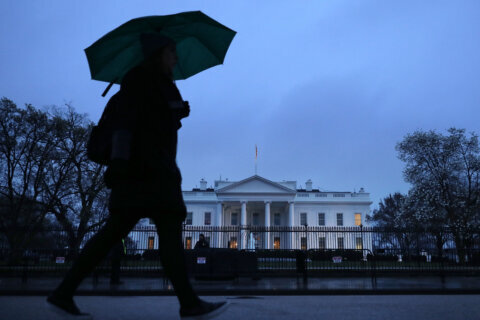More than 30 minutes elapsed after an initial 911 call before emergency crews were able to locate a patient near the Capital Crescent Trail, in Northwest D.C.
Safety advocate Dave Statter, a former reporter, posted radio transmissions on his Statter911 site of the Jan. 19 incident — when D.C. Fire and EMS arrived on the scene, the patient was already dead.
Statter is a frequent critic of the D.C. emergency call center’s performance.
According to radio traffic, the call was initially dispatched at 10:02 a.m. for a person in cardiac arrest on the Capital Crescent Trail, the former B&O railroad branch along the C&O Canal and the Potomac River.
However, a source familiar with the investigation told WTOP that the caller reported the older victim wasn’t on the trail, but in a campsite far off it — and that the victim had likely died overnight.
While a quicker response wouldn’t have made a difference in this case, Statter said getting crews quickly to emergency scenes along trails and in parks is more difficult than getting them to a particular address on a street map.
“There’s likely additional time that’s going to be added because you have to get to a more remote location,” he said.
Providing dispatchers with an accurate location during an emergency is key to a quick response: “There are certainly not as many landmarks, you need to look for the things that can identify where you are — a fork in the road that’s known, there are trail maps out there, there may even be little signs that tell you how many miles you are from a certain area.”
In this case, the initial dispatch instructed crews to respond to the Capital Crescent Trail “across from Canal Road and MacArthur Boulevard” — two well-known roads that don’t intersect, running parallel to each other, on opposite sides of Georgetown University.
D.C. Fire and EMS crews, while responding to the dispatch, sought clearer information on where they were going.
In addition, fire crews requested several times for the dispatch of a truck with two all-terrain vehicles — or gators — from a nearby firehouse, since the trail likely wouldn’t allow for full-sized trucks and ambulances to get close to the patient.
Statter said he’s not sure dispatchers understood what they were being asked to do.
Statter has said that D.C. 911 periodically — often, in his estimation — sends emergency crews to nonexistent addresses based on insufficient knowledge of the layout of the District.
“They didn’t say to D.C. Fire and EMS, ‘We’re still trying to get more information for you, because we know there’s not enough help in the information we provided so far,'” Statter said.








